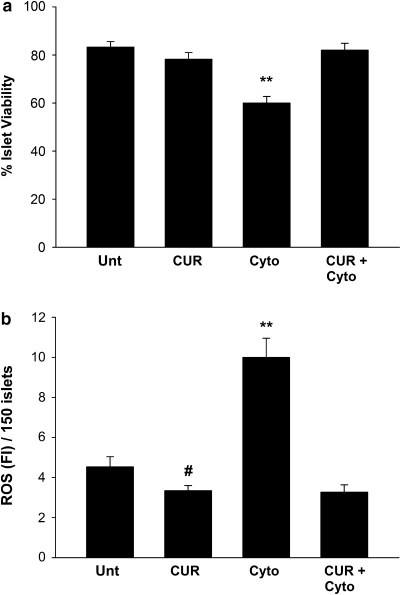Figure 1.
Curcumin totally protects against cytokine-induced decrease in islet viability and scavenges concomitant increases of islet reactive oxygen species (ROS). (a) Percentage viability in curcumin-treated (CUR) and untreated (unt) islets. Islet viability was detected by Hoechst 33342 and ethidium bromide staining. Hoechst-stained nuclei were considered live, whereas nuclei showing dual (positive for Hoechst as well as ethidium bromide) were considered negative. At least 150 nuclei per preparation were screened and each experiment was repeated at least three times. (b) ROS scavenging in curcumin-treated and untreated islets. Live islets were loaded with dichlorofluorescein diacetate (DCFH-DA) for 10 min and values are reported as fluorescent intensity per 150 islets. At least 150 islets were screened per preparation and each experiment was repeated three times. Correlation coefficient between ROS and percentage viability=−0.936 when P=0.0060 (Pearson correlation coefficient.) **Values differ from all other groups; #value differs significantly from ROS in untreated islets (P<0.050).

